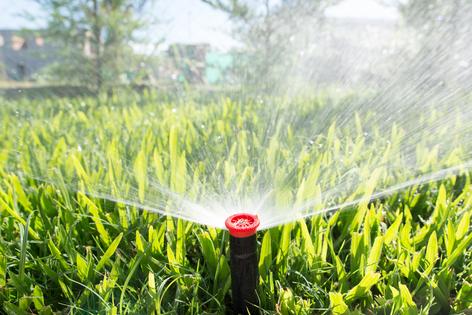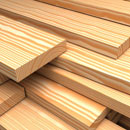10 spring lawn care tips to get your yard ready for summer
While you may have enjoyed taking a break from lawn care during the winter, spring is the season to turn your attention back to your yard. Your efforts now will largely determine if you have a lush, green, healthy lawn in the summer — or, if your lawn will be a telltale sign that you didn’t provide the level of loving care required for it to flourish.
From cleaning and fertilizing to aerating and mowing, these are the spring lawn care tips recommended by experts.
1. Clean up
Just as spring cleaning is designed to declutter and refresh your home’s interior after winter, spring is a great time to clean your yard as well. “Remove any leaves, twigs, or debris that accumulated over the winter,” advises Janna Bradley, COO and co-founder at Landscape Management Network (LMN). She says this allows light and air to reach the soil, which encourages healthy grass growth.
2. Fertilize
As your lawn recovers from the harsh winter, it will need nutrients to grow back thick and healthy. Brian Feldman, senior director of operations at TruGreen, tells me that fertilizers provide the important nutrients to produce a dense, green surface. “This is especially critical for soils in residential areas that tend to lack the proper nutrients for optimum plant health,” he explains.
However, you need to make sure that the fertilizer is tailored to your soil’s needs.”It’s important to do a soil test first to understand what nutrients are lacking,” Bradley explains. Some of the various essential nutrients can include magnesium, potassium, calcium, copper, and zinc. A soil test will reveal the pH and nutrient levels.
3. Overseed
During the winter, it’s quite possible that your lawn experienced both environmental stress and physical damage. So, Feldman recommends a yearly seeding practice to keep the lawn thick and heavy. “Overseeding in the spring can benefit the appearance of your lawn, but it’s hardly just a matter of throwing the best grass seed onto it,” he warns. “The process requires the know-how, specialized lawn care equipment, and maintenance follow-through to make it successful.” If you’re not committed to learn and be diligent, he recommends calling in the professionals to handle your lawn.
4. Identify your grass type
If you don’t already know your grass type, you need to identify it before trying to tend to it. Warm-season grasses require different planting, fertilization, and maintenance than cool-season grasses.
Warm-season grasses: Examples of warm-season grasses include Bermuda grass, zoysia grass, St. Augustine grass, and centipede grass. If you have warm-season grass, Feldman recommends feeding it with nutrients like potassium in the spring. “Hold off on the nitrogen-based fertilizer until summertime when the grass is actively growing,” he says.
Since warm-season grasses are usually grown in the southern half of the U.S., he says the best time to plant them is in late spring or early summer during the grass’ most active growing period in temperatures averaging about 80 degrees.
Cool-season grasses: Examples of cool-season grasses include Kentucky bluegrass, perennial ryegrass, tall fescue, and fine fescue.
“Cool-season grasses grow more actively in the spring and fall when they’ll need most of their fertilizer,” Feldman explains. He says the best time to plant cool-season grasses is usually mid- to late spring when temperatures are around 55 degrees.
However, if the air temperature tends to be at least 80 degrees F most of the year, Feldman says leaf growth will be significantly slower. So, warm-season grasses would work better in this temperature zone.
5. Prioritize weed control
Don’t wait to start working on weeds. When they’re smaller, the weeds are much easier to control. “Get ahead of weeding with pre-emergent products, which are intended to prevent weeds from emerging, and are usually applied in the spring to reduce crabgrass,” Feldman recommends.
6. Mulch sufficiently
Landscape beds are beautiful, but keep in mind that weeds in those beds can make their way into your yard. “Maintaining an adequate mulch bed of two inches to three inches around trees, shrubs, and flower beds will keep weed populations down,” Feldman says.
7. Watch out for crabgrass
Crabgrass is a major enemy to a healthy, lush lawn. “Crabgrass is an annual warm-season weed that begins to germinate in the spring and throughout the summer,” Feldman explains. He warns that it’s fast-growing, and if you don’t treat it quickly, crabgrass will rapidly overtake large patches of lawn.
8. Aerate
Aerating your lawn (with a plug aerator or spike aerator) can also be beneficial and alleviate soil compaction. “Aeration involves creating small holes in the soil to allow air, water, and nutrients to penetrate the roots of the grass,” explains Bradley.
9. Mow regularly
When your grass starts to grow this spring, you can start mowing it immediately to keep your yard neat. “Keep your lawn at the ideal height, which for most grass types is about 2.5 to 3 inches,” Bradley says. She also recommends keeping your mower blades sharp, since dull blades can damage the lawn.
10. Water as necessary
Unless your lawn is getting sufficient rain, Bradley says you should start watering it in spring. “It’s best to water deeply and infrequently rather than little and often,” she advises. The best time to water the lawn, Bradley says, is in the early morning to help prevent fungal diseases.
(Real Simple magazine provides smart, realistic solutions to everyday challenges. Online at www.realsimple.com.)
©2025 Dotdash Meredith. All rights reserved. Used with permission. Distributed by Tribune Content Agency, LLC.






























Comments